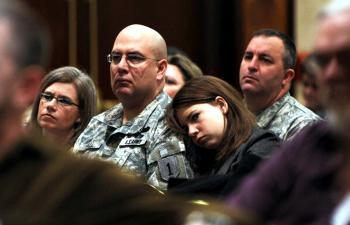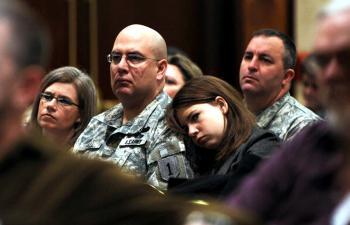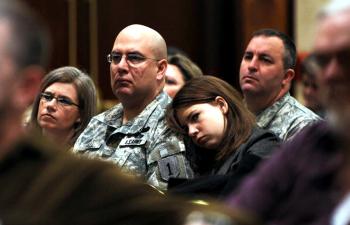Suicide rates in the Armed Forces have been on a steady incline for the past several years, and military leaders are struggling to change long-standing mentalities to try and get help for troops in need.
“It’s an area that can’t get enough focus right now,” said Adm. Mike Mullen, the chairman of the Joint Chiefs of Staff to the American Forces Press Service on Sept. 10. “When we’re losing as many lives as we are, it is a crisis we have to continue to address.”
The suicide rates of the Army and Marine Corps surpassed the civilian rate in 2008. There were 309 suicides in the Armed Forces in 2009, with a rate between 2005 and 2009 of around one suicide every 36 hours, according to a Defense Department task force, the American Forces Press Service reported.
Part of the problem is an established culture of not admitting to mental health issues in the military, which only began to change a few years ago. The Army, in particular, is currently trying to “reduce the stigma long associated with asking for help,” said Army spokesman at the Pentagon George Wright.
“For many, many years—particularly during the Cold War—there was a question in the security clearance form that had to do with whether or not a soldier had recently asked for help for any mental health issues,” Wright said.
The mental health issues question in the security clearance form included a broad range of problems ranging from clinical depression to alcohol abuse and anxiety.
Many members of the Army were reluctant to admit to such problems due to that question, “and there was a great and widespread concern that the security clearance would then be lifted, and hence, their promotion potential would be damaged,” Wright said.
The question on mental health issues was eliminated around 2007, according to Wright, and signified a change in the military’s perception of mental health issues, yet the military is still trying to fully eliminate the stigma.
The Army is “a very gung-ho, can-do organization that prides itself on mission accomplishment,” and at times when a soldier asks for help, other troops have the tendency to question his or her “effectiveness as a soldier,” Wright said.
He was quick to add that the mentality of questioning a soldier based on mental health issues is currently a problem more defined among troop peers and junior leaders. “The Army leadership is fully behind the notion of reducing stigma for behavioral health issues,” he said.
All branches of the military have implemented programs on suicide prevention and education. Last month was suicide prevention month, and the Armed Forces carried the theme: “Shoulder to Shoulder: I will never quit on life.”
“It’s an area that can’t get enough focus right now,” said Adm. Mike Mullen, the chairman of the Joint Chiefs of Staff to the American Forces Press Service on Sept. 10. “When we’re losing as many lives as we are, it is a crisis we have to continue to address.”
The suicide rates of the Army and Marine Corps surpassed the civilian rate in 2008. There were 309 suicides in the Armed Forces in 2009, with a rate between 2005 and 2009 of around one suicide every 36 hours, according to a Defense Department task force, the American Forces Press Service reported.
Part of the problem is an established culture of not admitting to mental health issues in the military, which only began to change a few years ago. The Army, in particular, is currently trying to “reduce the stigma long associated with asking for help,” said Army spokesman at the Pentagon George Wright.
“For many, many years—particularly during the Cold War—there was a question in the security clearance form that had to do with whether or not a soldier had recently asked for help for any mental health issues,” Wright said.
The mental health issues question in the security clearance form included a broad range of problems ranging from clinical depression to alcohol abuse and anxiety.
Many members of the Army were reluctant to admit to such problems due to that question, “and there was a great and widespread concern that the security clearance would then be lifted, and hence, their promotion potential would be damaged,” Wright said.
The question on mental health issues was eliminated around 2007, according to Wright, and signified a change in the military’s perception of mental health issues, yet the military is still trying to fully eliminate the stigma.
The Army is “a very gung-ho, can-do organization that prides itself on mission accomplishment,” and at times when a soldier asks for help, other troops have the tendency to question his or her “effectiveness as a soldier,” Wright said.
He was quick to add that the mentality of questioning a soldier based on mental health issues is currently a problem more defined among troop peers and junior leaders. “The Army leadership is fully behind the notion of reducing stigma for behavioral health issues,” he said.
All branches of the military have implemented programs on suicide prevention and education. Last month was suicide prevention month, and the Armed Forces carried the theme: “Shoulder to Shoulder: I will never quit on life.”







